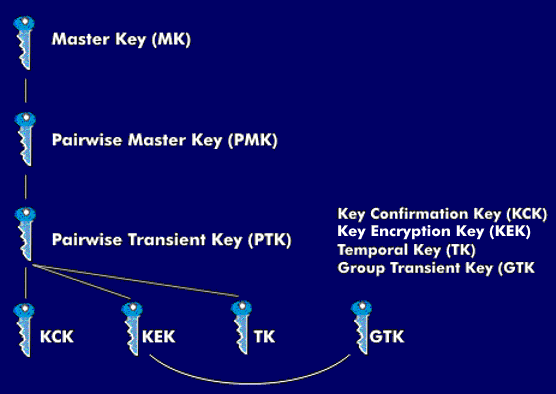pairwise transient key (802.11i) (PTK)
To ensure security in WLANs according to 802.11i, this standard specifies a complex key management system in which a pairwise master key( PMK) is derived from a master key ( MK) and the pairwise transient key (PTK) is obtained from this or from a pre-shared key ( PSK) via a four-way handshake.
The Pairwise Transient Key comprises several keys for communication between the access points( AP) and the WLAN devices. For example, the Key Confirmation Key( KCK), which represents bits 0 to 127 of the Pairwise Transient Key (PTK), is used to bind the Pairwise Master Key (PMK) to the access point and the WLAN end device.
The second key derived from the PTK key is the Key Encryption Key( KEK). This KEK key represents bits 128 to 256 of the PMK key and is used to distribute the Group Transient Key( GTK). And the third key generated from the PTK key is the Temporal Key( TK). It represents the PTK data bits above bit 256 and is used for encrypting the data.

